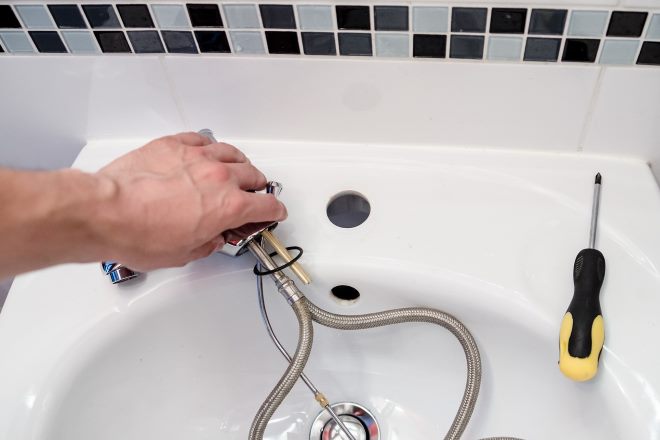Home Water Filtration & Conditioning for Plumbing
Clean, dependable water matters for drinking, cooking, and preserving your home's plumbing. Learn how water conditioners differ from filters, what treatment types protect pipes and appliances, typical installation needs, maintenance expectations, and how to pick the right whole-house or point-of-use system for your property.

Home Water Filtration & Conditioning for Plumbing
What a water conditioner does and how it works
Water conditioners are focused primarily on reducing the effects of hard water — minerals such as calcium and magnesium — rather than eliminating a wide spectrum of contaminants. Common approaches include ion exchange (traditional softening), template-assisted crystallization, and magnetic or electronic devices that change how minerals behave in solution. Instead of producing water that meets drinking-water purity standards, conditioners change mineral form or remove certain ions to limit scale that builds up inside pipes, heaters, and appliances.
Conditioners are particularly helpful when limescale visibly accumulates on fixtures, reduces heating efficiency, or shortens appliance life. When evaluating options, consider your plumbing materials and local water chemistry; very high hardness, heavy iron, or other chemical issues may mean a conditioner should be paired with other treatments.
How water treatment goes beyond simple filtration
‘Water treatment’ is a broad term that covers many processes: mechanical filtration to remove particles, activated carbon for taste and organic chemicals, membrane technologies (like reverse osmosis) for dissolved solids, disinfection (UV or chemical) for microbes, and softening or conditioning for hardness. Filtration typically refers to removing suspended solids and some chemicals, while treatment combines multiple technologies to address the full set of contaminants present in a supply.
A sensible household strategy begins with a water test that checks hardness, pH, metals, and any local concerns such as nitrates or bacteria. Based on results, you can choose between point-of-entry (whole-house) systems that protect plumbing and appliances, or point-of-use units that focus on drinking and cooking water.
Effects on pipes and plumbing systems
When matched properly to the water chemistry, filtration and conditioning can extend pipe and fixture life. Hard water encourages scale deposits that reduce effective pipe diameter and restrict flow; a conditioner or softener helps prevent this buildup. Sediment filters protect valves, aerators, and cartridges by removing abrasive particles.
Be mindful that some treatments alter water chemistry in ways that can affect corrosion risk. For example, softening may increase sodium or lower scaling potential but could influence galvanic reactions in mixed-metal plumbing. Routine upkeep is critical: clogged filters increase pressure drop, and neglected softening systems allow scale to return. If your home has older pipes or a mix of materials, consult a licensed plumber to avoid unintended side effects like galvanic corrosion.
Typical plumbing work required for installation
Installation complexity varies by system type. Under-sink or countertop point-of-use devices require minimal plumbing changes and often tap into an existing cold-water line or attach to a faucet. Whole-house (point-of-entry) filters, conditioners, and softeners are installed at the main incoming line and commonly require cutting and joining pipe, bypass loops to allow service without shutting off water, drain connections for backwash or regeneration cycles, and pressure-relief fittings.
A plumber will assess static and dynamic pressure, pipe material, and the best location for pre-filters or softening tanks. Some installations—particularly those that change plumbing routings or include pressure vessels—may require permits. Local code and inspection requirements differ, so professional guidance helps ensure safety and compliance.
Balancing performance, cost, and maintenance when choosing a system
Start with a comprehensive water test and list priorities: protect plumbing, improve taste and odor, or remove specific contaminants like lead or bacteria. For municipally treated water, carbon filters usually fix taste and smell issues. Private wells often need additional screening for bacteria, nitrates, and certain metals.
Match system flow rates and capacities to household demand to avoid unwanted pressure drops. Consider service intervals: carbon cartridges, sediment filters, and RO membranes need periodic replacement; softeners require salt refills and periodic cleaning. Evaluate upfront cost, ongoing consumables, and whether you want a single whole-house solution or a hybrid approach (whole-house protection plus point-of-use purification for drinking water).
| System type | Typical upfront cost (estimate) | Typical annual maintenance |
|---|---|---|
| Point-of-use carbon filter | $100 - $400 | $30 - $100 (cartridges) |
| Whole-house carbon/sediment | $800 - $2,500 | $50 - $200 (filters) |
| Water softener (ion exchange) | $800 - $3,000 | $50 - $200 (salt, service) |
| Reverse osmosis (under-sink) | $300 - $1,000 | $50 - $200 (filters, membrane) |
| Annual inspection/service | $100 - $300 | — |
Cost Disclaimer: Prices are estimates and can vary by region, brand, and installer. Contact suppliers or licensed plumbers for exact quotes.
Maintenance and long-term considerations
Regular maintenance keeps systems working as intended. Replace sediment and carbon filters on recommended schedules to prevent clogging and microbial growth. RO membranes and softener resin beds have finite lifespans and perform best with pre-filtration when water has high sediment loads. For softeners, monitor salt levels and follow manufacturer guidance for resin cleaning and sanitization.
Recordkeeping—dates of filter changes, salt refills, and annual inspections—helps avoid lapses that could damage plumbing or reduce water quality. If you notice pressure loss, strange tastes or odors, or renewed scaling, address the issue promptly with a professional.
Making the final choice and getting professional help
Combine reliable test data with realistic service expectations and budget. Look for systems with published performance data and, where relevant, third-party certifications. If you plan to protect plumbing and improve drinking water, a two-tier approach (whole-house protection + point-of-use drinking-water system) often provides the best balance of convenience and water quality.
Work with a licensed plumber or water-treatment specialist for accurate sizing, correct materials for your piping, and compliant installation. Their assessment will help you avoid compatibility problems and ensure long-term performance that aligns with your household’s priorities.
This article is for informational purposes only and should not be considered medical advice. Please consult a qualified healthcare professional for personalized guidance and treatment.






